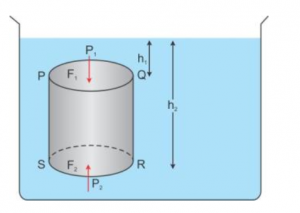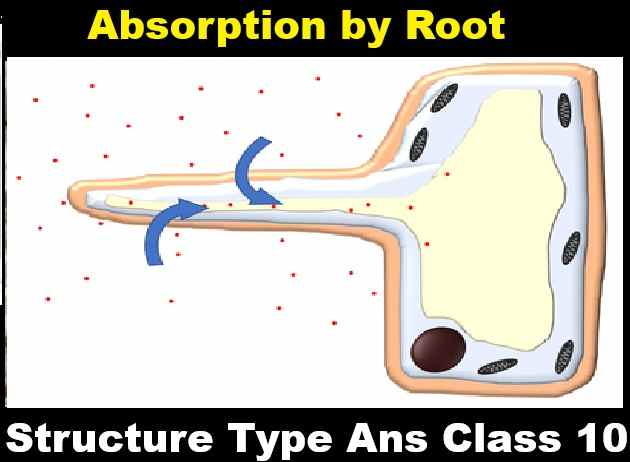Upthrust in Fluids, Archimedes’ Principle and Floatation Exe-5A Upthrust and Archimedes Principle Long Answer Type for Class-9 ICSE Concise Physics. There is the solutions of Long Answer type Questions of your latest textbook which is applicable in 2023-24 academic session. Visit official Website CISCE for detail information about ICSE Board Class-9.
Upthrust in Fluids, Archimedes’ Principle and Floatation Exe-5A Long Answer
(ICSE Class – 9 Physics Concise Selina Publishers)
| Board | ICSE |
| Class | 9 |
| Subject | Physics |
| Writer / Publication | Concise selina Publishers |
| Chapter-5 | Upthrust in Fluids, Archimedes’ Principle and Floatation |
| Exe – 5A | Upthrust and Archimedes Principle |
| Topics | Solution of Exe-5(A) Long Answer Type |
| Academic Session | 2023-2024 |
Exe-5A Upthrust and Archimedes Principle Long Answer Type
Ch-5 Upthrust in Fluids, Archimedes’ Principle and Floatation Physics Class-9 ICSE Concise
Page 65
Question 1. What do you understand by the term upthrust of a fluid? Describe an experiment to show its existence.
Answer:
When a body is partially or wholly immersed in a liquid, an upward force acts on it. This upward force is known as an upthrust.
Upthrust can be demonstrated by the following experiment:
Take an empty can and close its mouth with an airtight stopper. Put it in a tub filled with water. It floats with a large part of it above the surface of water and only a small part of it below the surface of water. Push the can into the water. You can feel an upward force and you find it difficult to push the can further into water.
It is noticed that as the can is pushed more and more into the water, more and more force is needed to push the can further into water, until it is completely immersed. When the can is fully inside the water, a definite force is still needed to keep it at rest in that position. Again, if the can is released in this position, it is noticed that the can bounces back to the surface and starts floating again.
(Upthrust in Fluids Exe-5A Long ICSE)
Question 2. Describe an experiment to show that a body immersed in a liquid appears lighter than it really is.
Answer:
Experiment to show that a body immersed in a liquid appears lighter:

Take a solid body and suspend it by a thin thread from the hook of a spring balance as shown in the above figure (a). Note its weight. Above figure (a) shows the weight as 0.67 N.
Then, take a can filled with water. Immerse the solid gently into the water while hanging from the hook of the spring balance as shown in figure (b). Note its weight. Above figure (b) shows the weight as 0.40 N.
The reading in this case (b) shall be less than the reading in the case (a), which proves that a body immersed in a liquid appears to be lighter.
Question 3. A body held completely immersed inside a liquid experiences two forces:
(i) F1, the force due to gravity and
(ii) F2, the buoyant force.
Draw a diagram showing the direction of these forces acting on the body and state the condition when the body will float or sink.
Answer:

If F1 < F2 or F1 = F2, the body will float.
If F1 > F2, the body will sink.
(Upthrust in Fluids Exe-5A Long ICSE)
Question 4. Prove that the loss in weight of a body when immersed wholly or partially in a liquid is equal to the buoyant force (or upthrust) and this loss is because of the difference in pressure exerted by liquid on the upper and lower surfaces of the submerged part of body.
Answer:

Consider a cylindrical body PQRS of cross-sectional area A immersed in a liquid of density as shown in the figure above. Let the upper surface PQ of the body is at a depth h1 while its lower surface RS is at depth h2 below the free surface of liquid.
At depth h1, the pressure on the upper surface PQ,
P1 = h1ρ g.
Therefore, the downward thrust on the upper surface PQ,
F1 = Pressure x Area = h1 gA ……………….(i)
At depth h2, pressure on the lower surface RS,
P2 = h2 g
Therefore, the upward thrust on the lower surface RS,
F2 = Pressure x Area = h2 ρ gA …………………(ii)
The horizontal thrust at various points on the vertical sides of body get balanced because the liquid pressure is the same at all points at the same depth.
From the above equations (i) and (ii), it is clear that F2 > F1 because h2 > h1 and therefore, body will experience a net upward force.
Resultant upward thrust or buoyant force on the body,
FB = F2 F1
= h2ρ gA h1 gA
= A (h2 h1) g
However, A (h2 h1) = V, the volume of the body is submerged in a liquid.
Therefore, upthrust FB = V g.
Now, Vρ g = Volume of solid immersed x Density of liquid x Acceleration due to gravity
= Volume of liquid displaced x Density of liquid x Acceleration due to gravity
and = Mass of liquid displaced x Acceleration due to gravity
hence = Weight of the liquid displaced by the submerged part of the body
Thus, Upthrust FB = weight of the liquid displaced by the submerged part of the body…..
(iii)
Now, let us take a solid and suspend it by a thin thread from the hook of a spring balance and note its weight.
Then take a eureka can and fill it with water up to its spout. Arrange a measuring cylinder below the spout of the eureka can as shown. Immerse the solid gently in water. The water displaced by the solid is collected in the measuring cylinder.

When the water stops dripping through the spout, note the weight of the solid and volume of water collected in the measuring cylinder.
From the diagram, it is clear that
Loss in weight (Weight in air – Weight in water) = Volume of water displaced.
Or, Loss in weight = Volume of water displaced x 1 gcm-3 [Because the density of water = 1 gcm-3]
Or, Loss in weight = Weight of water displaced ……………(iv)
From equations (iii) and (iv),
Loss in weight = Upthrust or buoyant force.
(Upthrust in Fluids Exe-5A Long ICSE)
Question 5. Describe an experiment to verify the Archimedes’ principle.
Answer:
Let us take a solid and suspend it by a thin thread from the hook of a spring balance and note its weight (Fig a).
Then take a eureka can and fill it with water up to its spout. Arrange a measuring cylinder below the spout of the eureka can as shown. Immerse the solid gently in water. The water displaced by the solid gets collected in the measuring cylinder.

When water stops dripping through the spout, note the weight of the solid and volume of water collected in the measuring cylinder.
From diagram, it is clear that
Loss in weight (Weight in air weight in water) = 300 gf 200 gf = 100 gf
Volume of water displaced = Volume of solid = 100 cm3
Because density of water = 1 gcm-3
Weight of water displaced = 100 gf = Upthrust or loss in weight
This verifies Archimedes’ principle
— : End of Upthrust in Fluids, Archimedes’ Principle and Floatation Exe-5A Long Answer Type Solutions :–
Return to Concise Selina Physics ICSE Class-9 Solutions
Thanks
Please share with your friends


